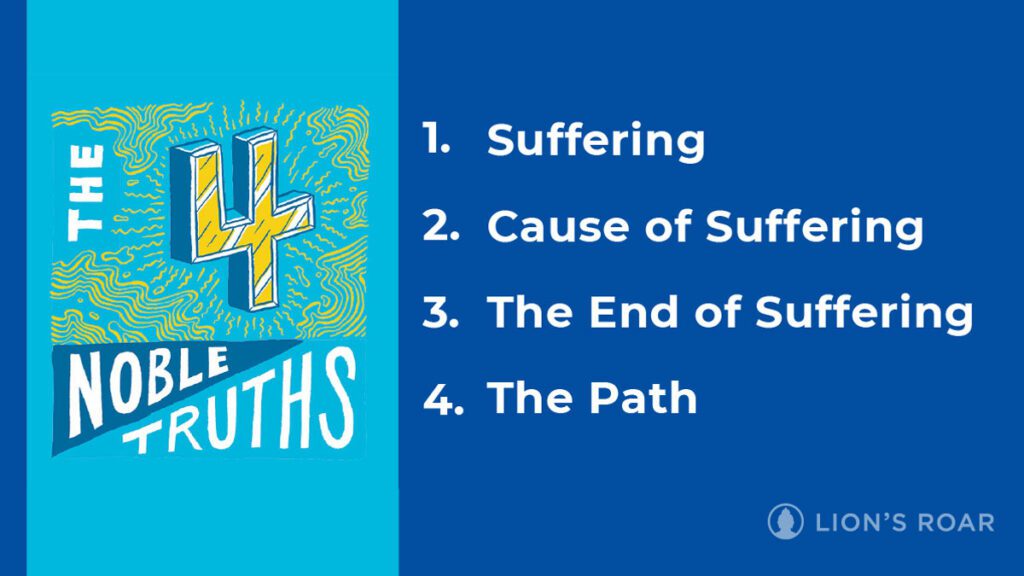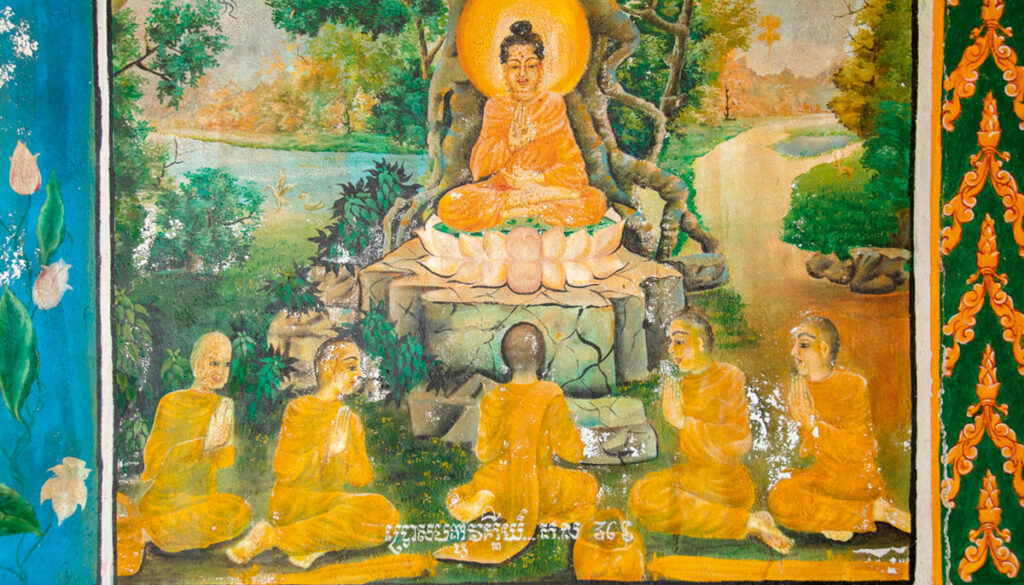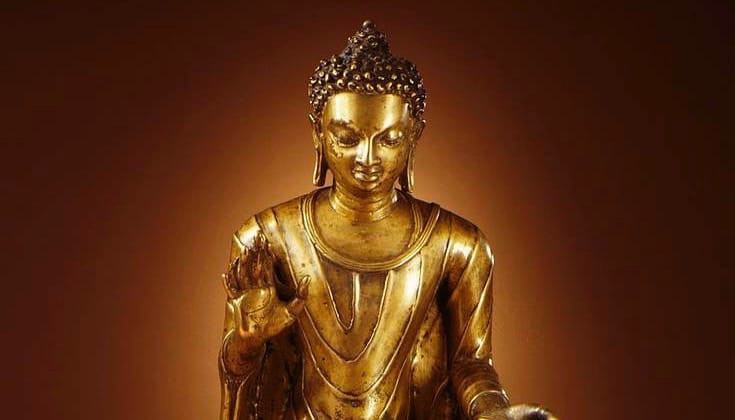The Four Noble Truths are the Buddha’s basic teaching. In four succinct statements, they encapsulate the goal, practice, and philosophy of Buddhism. These famed four truths provide a framework for understanding the nature of suffering and the path to liberation from it.
1. Suffering (Pali: dukkha; Sanskrit: duhkha)
The first noble truth is the pervasive presence of suffering in our lives. This truth teaches that life always involves suffering, in obvious and subtle forms. Even when things seem good, we still feel an undercurrent of anxiety and uncertainty inside.
2. The Cause of Suffering (Pali and Sanskrit: samudaya)
The cause of suffering is fundamental ignorance or misunderstanding about our own nature and the nature of reality. We suffer because of our mistaken belief that things, including us, are separate, independent, and solid. The painful and futile struggle to maintain this delusion of ego is known as samsara, or cyclic existence.
3. The End of Suffering (Pali and Sanskrit: nirodha)
The good news is that our obscurations are temporary. They are like passing clouds that obscure the sun of our enlightened nature, which is always present. Therefore, suffering can end because our obscurations can be purified, and the awakened mind is always available. This state is referred to as enlightenment, or nirvana, which is the complete cessation of suffering. It is a state of freedom, peace, and liberation from the cycle of birth, death, and rebirth.
4. The Path (Pali: magga; Sanskrit: marga)
The fourth and final truth tells us that by spiritual practice, living ethically, and developing wisdom, we can take the same journey to enlightenment and freedom from suffering that the buddhas do. By following the eightfold path, we, too, can wake up.

Related Reading
The Four Noble Truths Are a Plan of Action
Buddhist teacher and scholar Jan Willis on the Buddha’s central teaching — his diagnosis and cure for suffering.
The Message of the Buddha’s Four Noble Truths
The message of Buddha's Four Noble Truths is that paying attention and seeing clearly lead to behaving impeccably in every moment on behalf of all beings.
The Buddha’s Noble First Teaching
Tulku Thondup on the four simple and practical statements that encompass the entire Buddhist path, the Buddha's Four Noble Truths.
Buddhism A–Z
Explore essential Buddhist terms, concepts, and traditions.




